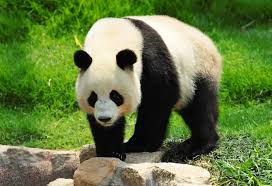Stamp: kOALA (Cinderellas 2001)
kOALA (Cinderellas 2001)
01 January (Cinderellas ) within release Russia : Komi goes into circulation Stamp kOALA face value 5 Russian ruble
| Stamp kOALA in catalogues | |
|---|---|
| Colnect codes: | Col: RU-KO 2001-20/7 |
Stamp is square format.
This item was illegally produced without the authorization of the postal administration inscribed on the stamps. They have no postal validity.Also in the issue Russia : Komi:
- Mini Sheet - Attack on the World Trade Center face value 12*5;
- Mini Sheet - Attack on the World Trade Center face value 12*5;
- Souvenir Sheet - Attack on the World Trade Center face value 25;
- Souvenir Sheet - Attack on the World Trade Center face value 25;
- Mini Sheet - Concorde face value 9*5;
- Mini Sheet - Concorde face value 9*5;
- Stamp - Dogs face value 5;
- Stamp - Dogs face value 5;
- Stamp - Dogs face value 5;
- Stamp - Dogs face value 5;
- Stamp - Dogs face value 5;
- Stamp - Dogs face value 5;
- Stamp - Dogs face value 5;
- Mini Sheet - Dogs face value 45;
- Mini Sheet - Dogs face value 12*6;
- Stamp - kOALA face value 5;
- Souvenir Sheet - Marlon Brando face value 15;
- Stamp - Pandas face value 5;
- Stamp - Pandas face value 5;
- Stamp - Pandas face value 5;
- Stamp - Pandas face value 5;
- Stamp - Pandas face value 5;
- Stamp - Pandas face value 5;
- Mini Sheet - Penguins face value 12*3.50;
- Mini Sheet - Queen face value 6*5;
- Mini Sheet - Queen face value 6*5;
- Stamp - Whales face value 5;
- Stamp - Whales face value 5;
- Stamp - Whales face value 5;
- Stamp - Whales face value 5;
- Stamp - Whales face value 5;
- Stamp - Whales face value 5;
- Stamp - Whales face value 5;
|
Data entry completed
53%
|
|
|---|---|
| Stamp kOALA in digits | |
| Country: | Cinderellas |
| Date: | 2001-01-01 |
| Print: | Offset lithography |
| Emission: | Незаконный |
| Format: | Stamp |
| Face Value: | 5 Russian ruble |
Stamp kOALA it reflects the thematic directions:
Animals are multicellular, eukaryotic organisms of the kingdom Animalia (also called Metazoa). All animals are motile, meaning they can move spontaneously and independently, at some point in their lives. Their body plan eventually becomes fixed as they develop, although some undergo a process of metamorphosis later on in their lives. All animals are heterotrophs: they must ingest other organisms or their products for sustenance.
Mammals are any vertebrates within the class Mammalia (/məˈmeɪli.ə/ from Latin mamma "breast"), a clade of endothermic amniotes distinguished from reptiles (including birds) by the possession of a neocortex (a region of the brain), hair, three middle ear bones and mammary glands. All female mammals nurse their young with milk, secreted from the mammary glands. Mammals include the largest animals on the planet, the great whales. The basic body type is a terrestrial quadruped, but some mammals are adapted for life at sea, in the air, in trees, underground or on two legs. The largest group of mammals, the placentals, have a placenta, which enables the feeding of the fetus during gestation. Mammals range in size from the 30–40 mm (1.2–1.6 in) bumblebee bat to the 30-meter (98 ft) blue whale. With the exception of the five species of monotreme (egg-laying mammals), all modern mammals give birth to live young. Most mammals, including the six most species-rich orders, belong to the placental group. The largest orders are the rodents, bats and Soricomorpha (shrews and allies). The next three biggest orders, depending on the biological classification scheme used, are the Primates (apes and monkeys), the Cetartiodactyla (whales and even-toed ungulates), and the Carnivora (cats, dogs, seals, and allies).
The giant panda (Ailuropoda melanoleuca), also known as the panda bear or simply panda, is a bear species endemic to China. It is characterised by its white coat with black patches around the eyes, ears, legs and shoulders. Its body is rotund; adult individuals weigh 100 to 115 kg (220 to 254 lb) and are typically 1.2 to 1.9 m (3 ft 11 in to 6 ft 3 in) long. It is sexually dimorphic, with males being typically 10 to 20% larger than females. A thumb is visible on its forepaw, which helps in holding bamboo in place for feeding. It has large molar teeth and expanded temporal fossa to meet its dietary requirements. It can digest starch and is mostly herbivorous with a diet consisting almost entirely of bamboo and bamboo shoots.



